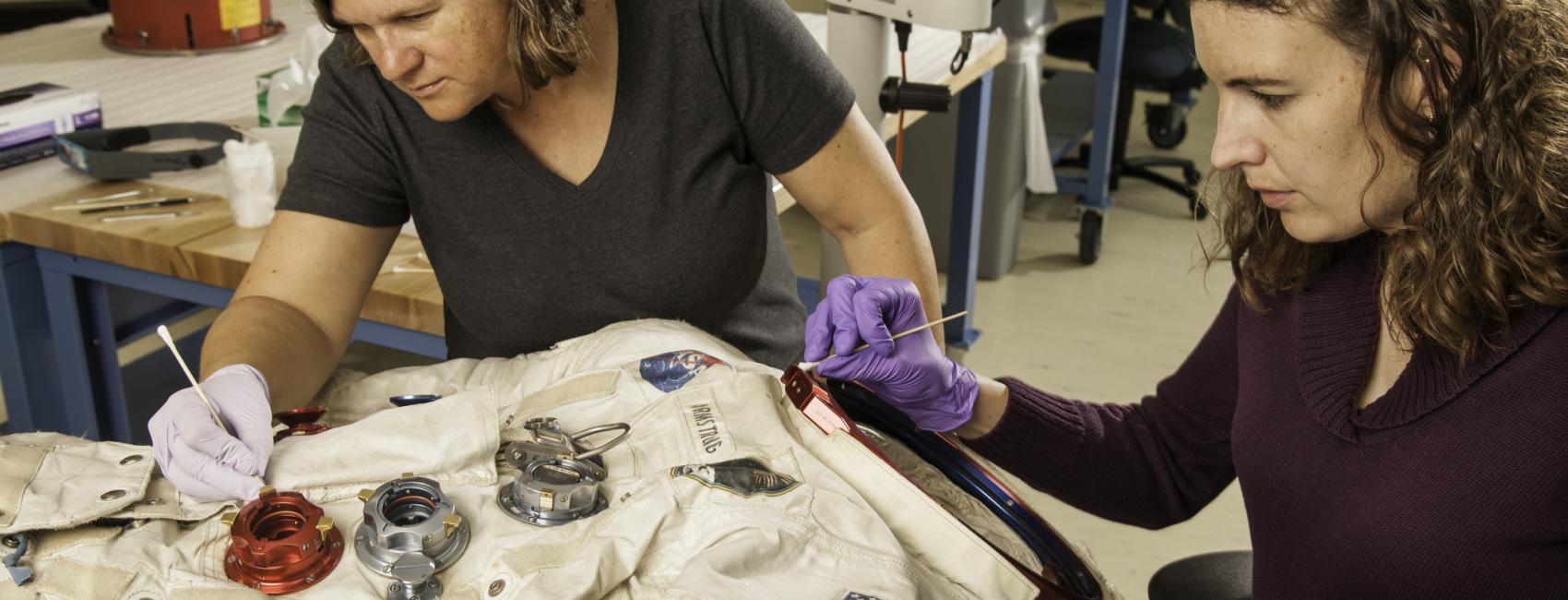
The Search for Mars' Oceans
-
National Air and Space Museum in Washington, DC and Presented Online
Free, Registration Required Free
Presenter: Dr. Gina DiBraccio and Dr. Charles Malespin, NASA Goddard

-
National Air and Space Museum in Washington, DC and Presented Online
Free, Registration Required Free
Presenter: Dr. Gina DiBraccio and Dr. Charles Malespin, NASA Goddard
Was Mars once covered in oceans? If so, where did they go? Like many scientific endeavors, understanding the history of water on Mars is a team effort, and Gina DiBraccio and Charles Malespin from NASA’s Goddard Space Flight Center’s research on the topic frequently requires many perspectives and points of view. In this lecture they will join together to talk about water on Mars from top to bottom. DiBraccio will highlight how Mars' ocean escaped into space through the atmosphere, and Malespin will tell us all about how Mars' rovers have deepened our understanding of the fate of oceans on Mars from the ground.
Gina DiBraccio is the deputy director of the Heliophysics Science Division at NASA's Goddard Space Flight Center. Her research focuses on magnetospheric physics and solar wind-planetary interactions for both intrinsic and induced planetary magnetospheres throughout the Solar System. Charles Malespin is the chief of the Planetary Environments Lab, and serves as the principal investigator for the Sample Analysis at Mars (SAM) instrument suite currently on the Curiosity rover in Gale Crater, Mars.
This program will be presented in-person at the National Air and Space Museum in DC and will be streamed live on the Museum's YouTube channel.
ASL interpretation will be provided for the in-person event. ASL interpretation and live captioning will be provided on YouTube. If you require another access service to fully participate or have any questions about accessibility, please contact NASMPublicLectures@si.edu. To ensure the best experience, please try to contact us at your soonest convenience.
Lecture attendees are invited to arrive early at 7 pm to explore the first-floor galleries of the Museum. After the lecture, attendees can join our astronomy educators outside the Independence Avenue entrance for pop-up stargazing (weather permitting).
Life as we know it requires access to water, usually liquid water, and Earth is not the only place in our solar system where we can find this resource. In this year’s Exploring Space Lecture Series, we will explore the distribution of liquid oceans in our solar system, past and present; consider the origins of Earth’s oceans and learn about what happened to Mars’ oceans; question whether Earth’s twin, Venus, could have ever been cool enough to support oceans; and examine why the outer solar system is dominated by moons with salty, underground oceans.
Registration is encouraged for online viewing. Those who register will get a day-of reminder about the livestream.

We rely on the generous support of donors, sponsors, members, and other benefactors to share the history and impact of aviation and spaceflight, educate the public, and inspire future generations. With your help, we can continue to preserve and safeguard the world’s most comprehensive collection of artifacts representing the great achievements of flight and space exploration.
We rely on the generous support of donors, sponsors, members, and other benefactors to share the history and impact of aviation and spaceflight, educate the public, and inspire future generations. With your help, we can continue to preserve and safeguard the world’s most comprehensive collection of artifacts representing the great achievements of flight and space exploration.